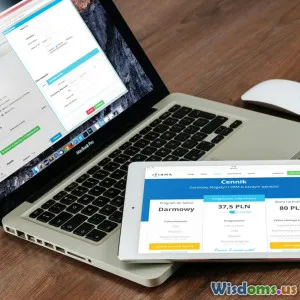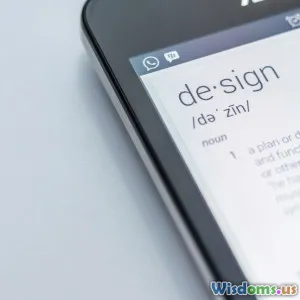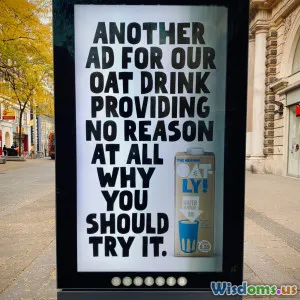
Which Mobile Design Software Best Fits Your Workflow
9 min read Discover which mobile design software aligns perfectly with your workflow for efficient, creative, and impactful app and UI design. (0 Reviews)
Which Mobile Design Software Best Fits Your Workflow?
In the fast-evolving landscape of mobile app development, one question consistently challenges designers and developers alike: Which mobile design software best fits your workflow? The decision could dictate how smoothly your ideas translate into tangible, user-friendly interfaces. Whether you’re a UX/UI designer, product manager, or developer dabbling in design, the right tool can streamline your workflow, enhance collaboration, and even fuel creativity.
This article dives into the major design software options tailored for mobile platforms, examining their strengths, weaknesses, and ideal users. By the end, you’ll have a clearer picture of what suits your personal or team workflow, helping you focus on creation rather than grappling with software frustrations.
Understanding Mobile Design Workflows
Before jumping into software comparisons, it's critical to understand the underlying workflows involved in mobile design. Typically, mobile design workflows encompass several stages:
- Ideation and Wireframing: Sketching basic layout and user journey.
- Prototyping: Creating interactive versions that simulate app behavior.
- Visual Design and Styling: Applying branding, colors, typography, and detailed aesthetics.
- User Testing: Sharing prototypes internally or with users for feedback.
- Developer Handoff: Exporting assets, code, or specs to developers.
Different software tools focus on one or more of these stages. Therefore, the 'best fit' depends strongly on which phase you emphasize, your team setup, and integration needs.
Leading Mobile Design Tools: Strengths and Use Cases
1. Figma: The Cloud-Based Collaboration Powerhouse
Overview: Figma has revolutionized design through its entirely web-based approach. It allows real-time collaboration, meaning designers, developers, and stakeholders can work simultaneously on the same file.
Strengths:
- Live Collaboration: Works like Google Docs but for design.
- Cross-Platform: Accessible on Windows, Mac, Linux, and even Chromebooks.
- Plugin Ecosystem: Vast library including accessibility checkers, stock photo inserters, and design system sync.
- Prototyping & Developer Handoff: Features like interactive transitions, comments, and CSS/Android/iOS code generation.
Workflow Fit: Ideal for teams with distributed members or designers valuing flexibility and feedback loops.
Example: A startup employing remote designers across continents downsized review cycles by 50% by switching to Figma, thanks to instant feedback and cloud storage.
2. Adobe XD: Integration and Performance for Creative Powerhouses
Overview: Adobe XD is part of Creative Cloud, blending sharp performance with integration that designers accustomed to Adobe’s ecosystem appreciate.
Strengths:
- Speed: Lightweight with faster loading times than some peers.
- Prototyping & Animation: Features auto-animate for microinteractions, voice triggers, and responsive resize.
- Seamless Adobe Integration: Links with Photoshop, Illustrator, and After Effects.
- Supports Offline Work: Unlike fully cloud-based tools.
Workflow Fit: Best suited for designers already embedded in Adobe products who require high-fidelity prototypes.
Insight: Industry reports show Adobe XD is preferred among enterprise-level teams creating complex, branded apps owing to its precise control and Adobe ecosystem synergy.
3. Sketch: Veteran Vector Design with Community Support
Overview: Sketch pioneered vector-based UI design for Macs. It remains a darling of many UI designers despite not having native prototyping or serious collaboration features without plugins.
Strengths:
- Robust Vector Editing: Advanced shapes, symbols, overrides.
- Vast Plugin Library: Third-party extensions for prototyping, collaboration like Abstract or Zeplin, and automation.
- Strong Community: Extensive asset and tutorial resources.
Limitations:
- Mac Only: Exclusivity limits cross-platform teams.
- Collaboration Requires Workarounds: No live editing, so less ideal for dynamic teams.
Workflow Fit: Perfect for Mac-only designers focusing on fine-grained visual detail and preferring integrating specialized tools for prototyping and collaboration.
4. InVision Studio: Integrated Prototyping and Animation
Overview: InVision Studio is tailored for rapid prototyping with powerful animation capabilities.
Strengths:
- Advanced Animation Tools: Timeline-based animation for lifelike transitions.
- End-to-End Design: Combines prototyping, feedback, and developer handoff.
- Design System Management: Supports centralized asset libraries.
Challenges:
- Performance: Some users note lag with complex projects.
- Learning Curve: Animation features require time to master.
Best Use: Teams delivering rich, animated interfaces within controlled environments valuing prototyping robustness.
5. Proto.io and Marvel: Simplified and Intuitive Prototyping
While not as feature-packed as the previous tools, Proto.io and Marvel are excellent for teams prioritizing ease and speed over feature depth.
- Proto.io offers drag-and-drop prototyping with gesture support and user testing features.
- Marvel excels in integrating design, prototyping, and user testing within a user-friendly interface.
These are often favored by non-designers or rapid MVP development phases.
How to Select the Right Tool for Your Workflow
Choosing a tool hinges on numerous factors beyond feature checklists. Here’s a framework to guide decision-making:
Define Your Priorities
- Collaboration: Do you need real-time collaboration? Tools like Figma shine here.
- Platform: Mac, Windows, or web-based? Pick tools compatible with your OS and team.
- Integration Needs: If you rely heavily on Adobe apps, XD has advantages.
- Prototyping Depth: For complex animations, InVision Studio might excel.
- Offline Usage: If your work conditions limit internet access, consider Adobe XD or Sketch.
Consider Team Composition
A small freelance designer might prioritize simplicity and cost, whereas a large team might demand robust collaboration and version control.
Try Before You Commit
Most tools offer free trials or freemium versions. Spending time prototyping a small project can reveal the tool’s workflow fit.
Real-World Insight: How Designers Decided
-
Startup Example: A team at a SaaS startup switched from Sketch to Figma during a remote work transition. They cited a 30% increase in design-to-development speed due to Figma’s shared libraries and live commenting.
-
Agency Example: A creative agency blending high-end branding with app design uses Adobe XD extensively for design fidelity and handoff precision.
-
Individual Designer: Freelance designers often pick tools like Figma or Marvel for their cloud-sync and easy sharing via URL.
Challenges and Trends in Mobile Design Software
- Cross-Platform Demand: Increasing need for tools accessible across devices and operating systems.
- DesignOps Integration: Tools are evolving to manage design systems at scale.
- AI and Automation: Emerging AI features for generating design elements and code integration.
- Performance: As designs get complex, software speed and responsiveness remain crucial.
Keeping abreast of these trends ensures your workflow tools stay future-proof.
Conclusion: Aligning Your Design Tools With Your Workflow
The array of mobile design software available today caters to diverse workflows and team structures. Whether your priority is collaborative versatility, integration with creative suites, animation sophistication, or simplicity, there’s a tool tailored for you. Remember, the ‘best fit’ isn’t always the most feature-rich option but the one that complements your workflows seamlessly and scales with your projects.
Investing the time to evaluate your team’s priorities, experimenting with leading choices like Figma, Adobe XD, Sketch, or InVision Studio, sets the foundation for productive, inspired design work.
Ultimately, the right mobile design software acts not just as a tool but as a catalyst unlocking your creative potential and accelerating your product’s path to real users.
Unlocking your ideal tool harmony begins with insight; now it’s your turn to decide and design boldly.
Rate the Post
User Reviews
Popular Posts
















